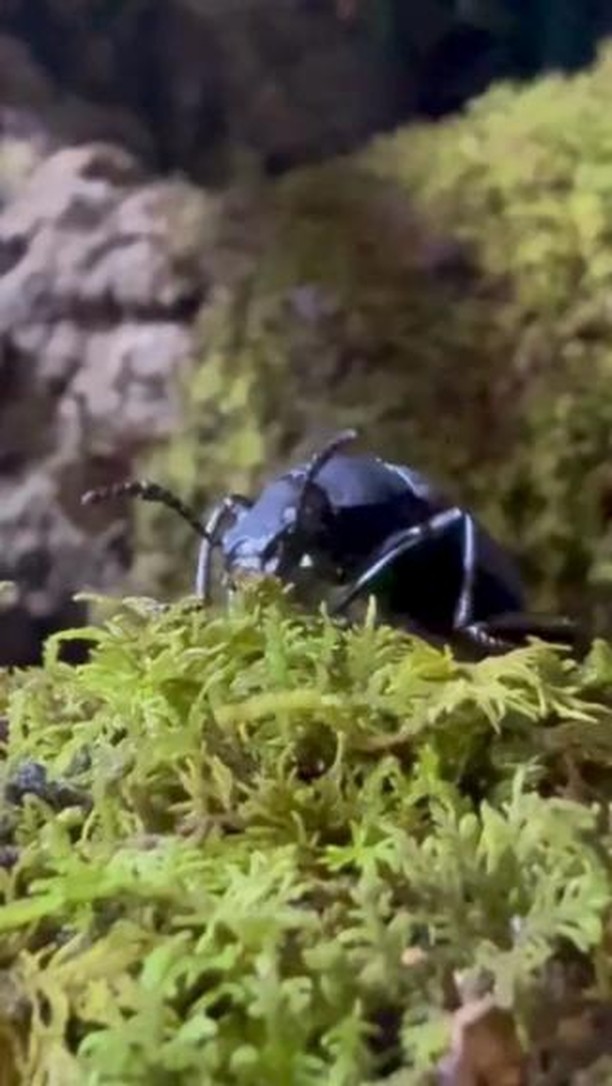- Overview of Darkling Beetles and Their Habitat
- Unique Defense Mechanism: Chemical Spraying
- Ecological Importance and Role in Biodiversity
- Conservation Challenges and Efforts
- Insights from the Butterfly Pavilion Exhibit
Darkling beetles, belonging to the family Tenebrionidae, represent a fascinating group of insects that thrive in various habitats. One of the most captivating aspects of these beetles is their prevalence in arid regions. They adapt well to deserts, grasslands, and woodlands, making them a crucial part of many ecosystems. At the Butterfly Pavilion’s newest exhibit, “Legacies: Invertebrates of Mexico,” visitors can observe these beetles wandering in their naturalistic habitats, often seen exploring among one another.
These beetles exhibit a remarkable ability to survive in harsh conditions, utilizing their sturdy exoskeletons to retain moisture and withstand temperature fluctuations. Their habitat preferences also contribute to soil health, as they aid in breaking down organic material.
Darkling beetles have evolved a distinct defense mechanism that draws attention—the ability to spray a potent-smelling substance from their rear end when threatened. This secretion is primarily a mixture of chemicals that can deter predators, making them less palatable. Although this behavior may seem alarming, it poses no threat to humans. Instead, it serves as an effective deterrent against birds, mammals, and even some larger insects. For you to spot these charming beetles in the exhibit, look for their characteristic movements and interactions as they engage with their environment.
The ecological role of darkling beetles extends beyond their formidable defense strategies. As detritivores, they contribute significantly to nutrient cycling within ecosystems. By consuming decaying plant matter, they help facilitate decomposition, which in turn enriches the soil. This process is vital for the growth of plants, which forms the foundation of terrestrial ecosystems.
These beetles also interact with other invertebrate species, playing a role in food webs. They can serve as prey for various animals, including birds and reptiles, thus showcasing their importance in sustaining biodiversity. Through their activities, darkling beetles help maintain the balance of their ecosystems.
However, darkling beetles and other invertebrates face several conservation challenges. Habitat loss due to urbanization, agricultural expansion, and climate change has significantly impacted their populations. As ecosystems shift, these beetles may struggle to adapt to new conditions. This situation raises concerns about biodiversity loss and the overall health of ecosystems.
Efforts to raise awareness about the conservation of darkling beetles are important to their preservation. Educational initiatives, such as the Butterfly Pavilion’s exhibit, create an opportunity to learn about these insects and their crucial functions. By promoting understanding of invertebrates, the exhibit aims to foster respect and appreciation for these often-overlooked creatures.
Visitors to the Butterfly Pavilion can engage with numerous educational displays that outline the habits and habitats of darkling beetles. These resources offer insights into their life cycles, feeding behaviors, and interactions with other organisms. Furthermore, hands-on opportunities allow individuals to observe the beetles up close, enhancing their educational experience.
Conservation efforts also include habitat restoration projects. By preserving and restoring areas where darkling beetles thrive, we can help ensure their survival. Engaging the public in initiatives, such as local clean-ups and habitat restoration days, serves to enhance community involvement and awareness about the importance of conserving invertebrates.
Darkling beetles exemplify how even the smallest creatures play essential roles in our ecosystems. Through their defense mechanisms, ecological contributions, and the challenges they face, these fascinating insects highlight the intricate connections within nature.
Educational exhibitions, like the one at the Butterfly Pavilion, serve not only to inform but also to inspire future generations to engage in wildlife conservation. By understanding and valuing the life of darkling beetles and other invertebrates, we can contribute to a more sustainable future for our planet.
Explore more about these striking beetles and their role in biodiversity at the Butterfly Pavilion’s website, where you can find further details about the exhibit and additional resources about wildlife conservation.
*****
Source Description
Meet the Darkling Beetle, one of the fascinating animals featured in Butterfly Pavilion’s newest exhibit, Legacies: Invertebrates of Mexico. These invertebrates are known for their unique defense mechanism: spraying a strong-smelling substance from their rear to deter predators. While it may be a pain in the butt, Darkling Beetles pose no threat to humans. On a typical day, you can spot these charming insects wandering among one another in their habitat. Learn more about this exhibit at butterflies.org/legacies-invertebrates-of-mexico!


